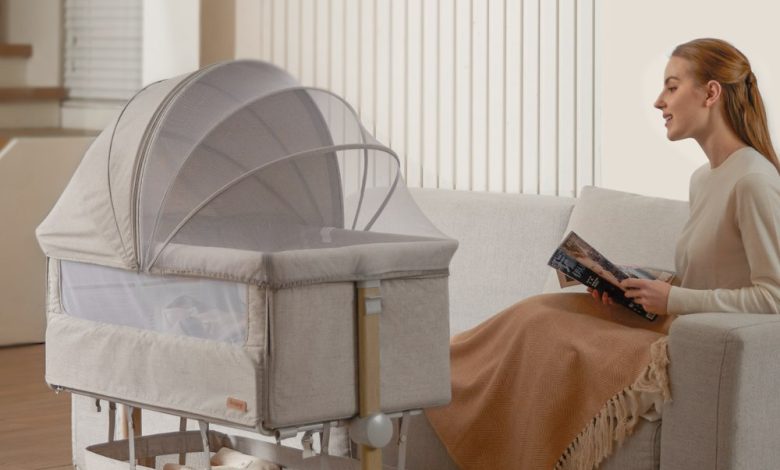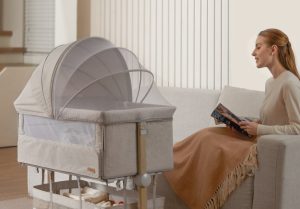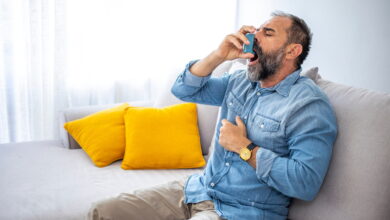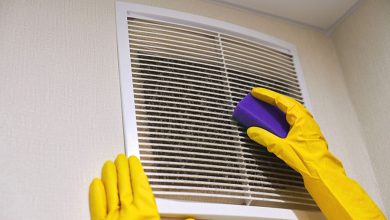9 Tips for Buying a Bedside Crib for Your Baby

Referring to the 2011 U.S. standard on bedside bassinet safety, you should pay attention to the following points.

Points of Attention
1. The spacing between the bars of a wooden bedside bassinet must be less than 6 cm to avoid accidentally catching the baby’s head.
2. The partitions at the head and tail of the bed should not have cutouts and carvings to prevent hooking or scratching the baby.
3. the corner posts on the four corners of the bed should be much higher. It can avoid hanging onto the baby’s clothes and causing the baby to suffocate.
4. all parts must be original, including screws, bolts, nuts, plastic, etc. If the original parts are broken, you should find the manufacturer to buy a replacement.
Because the original product’s health and safety are guaranteed and can be matched exactly, there is no risk of loose parts. If the random substitution is not fully matched, it is easy to lose parts.
5. The bedside bassinet should not have rough edges or sharp parts. The wood should be free from burrs or cracks.
If it is rough, sharp, or has burrs, find a way to smooth or grind smooth. If the wood has cracks, do not use the bed unless you can find a business to replace the original parts, which can be installed completely tightly.
6. mattress should be firm, hard, and match the crib exactly; if you want to buy a separate mattress, the size must be the same as the bed, and the distance between the mattress and the edge of the bed can not be greater than two fingers.
7. the material used in the crib should be firm, healthy, and free of benzene, formaldehyde, heavy metals, and other substances harmful to health.
8. when the baby learns to sit (generally around 6 months), you need to reduce the height of the mattress promptly.
Before the baby can stand, lower the mattress to the lowest level. Make sure that the height of the fence is higher than the nipple position when the baby stands up.
When the baby grows to about 90 cm high, or when the baby stands up, the height of the fence is lower than the nipple position, the bed is no longer suitable and needs to be replaced in time. 9.
9. It is not recommended to buy a crib where one side of the guardrail can be lowered.
U.S. regulations prohibit the production and sale of one side of the guardrail that can be put down the crib.
If you choose a crib where one side of the fence can be lowered. The side rail should be at least 23 cm above the mattress. It is lowered and at least 66 cm above the mattress. It is raised back to its original position.
The baby’s safety is more important than the convenience of adults, so parents are advised to choose a crib with a fixed side rail. If you buy a crib with side rails that can be put down, try not to use this feature daily.
The above points are about the safety and health of the child, which is the most important.
Other features are secondary. If these features do not affect the fastening of the bedside bassinet, it is safe for the baby. Then there is no problem, for example.
With rollers
The crib at home will rarely change position often. This feature is not necessary. And if the wheels are not fixed, when using the mother-child crib mode, the baby has the risk of falling out of bed or getting stuck in the crevice.
Is it necessary to give the baby a bed enclosure?
There is no need to purchase a crib circumference.
The American Academy of Pediatrics opposes the use of crib enclosures. The crib bib is weak in preventing bumps and bruises, and there is no evidence that the crib bib is useful in preventing bumps and bruises. Instead, it poses a potential risk of suffocation, getting caught in a gap or getting stuck, and in severe cases, death.
Older infants may also use the bed surround to climb out of the crib, resulting in a fall accident. Many infant injuries and deaths are related to bed surround.
Therefore, for the safety of babies, do not use bed surrounds for cribs.




